On this page we aim to show examples of butterflies you will actually be able to see on our local commons or on visits to nearby nature reserves - if you keep your eyes open. Some are relatively common, others much less so, but all the photographs displayed below have been captured locally. Unimproved chalk grassland is getting to be a rarish habitat nationally, but it does tend to produce a rich mix of wildflowers, and that supports a good variety of butterflies, including some that are no longer easy to find on more intensively farmed land.
Most of the photographs were taken on Minchinhampton, Bownham or on Rodborough Common - all within walking distance of Minchinhampton itself. However, we do not exclude advertising a few interesting inhabitants of one the nearby nature reserves (e.g. Daneway Banks, Siccaridge Wood or Strawberry Banks - as noted in the text).
None of the photographs required particularly sophisticated equipment: many were taken with an ordinary and now rather old compact camera (Canon IXUS 100/Powershot SD780), some with an iPhone, and it is mainly my wife Mary who has the most patience. We often find that the best time for photography is early on a sunny day, when the butterflies still need to warm up to become active. Then it is just a matter of very slowly creeping up on a butterfly, taking shots as you close in, sometimes until the lens is no more than a couple of centimeters away. A bit later on they get too lively and fly away before you get near. Mating butterflies are always a good bet - they definitely have their little minds on other things!
Frequently the butterfly gets nervous and moves off - or the auto-focus picks the wrong target. So we do have to dispose of a lot of photos of blurred grass stems - or blurred butterflies and wonderfully sharp grass stems - but we always carry the compacts with us even on the most casual short walks. The best camera for butterfly photography is always the one you actually have with you when you see a photo opportunity and for every ten duds you might get one wonderful shot. I am sure the same tricks would work with a smart-phone camera.
If you wish to know more about any butterfly, or access a wide selection of photographs to aid identification, go to http://www.ukbutterflies.co.uk/.
Blues, Coppers and Hairstreaks (Lycanidae)
Adonis Blue Polyommatus bellargus
|
Photographs hardly do justice to the startling blue of the male Adonis. (If you are doubtful of the identification it probably isn't one.) Also look for the black lines on the rear of the wings. The female is a rich chocolate brown on the upper wing surface. The lower wings are more similar, with the female somewhat browner. The Adonis has two broods each year, and can be seen on sunny banks in June and August/early September. According to Dr Anne Goodenough, an ecologist at University of Gloucestershire, this is one of the species that is likely to benefit from climate change, with its range (previously confined to the most southern grassland gradually extending northwards. |
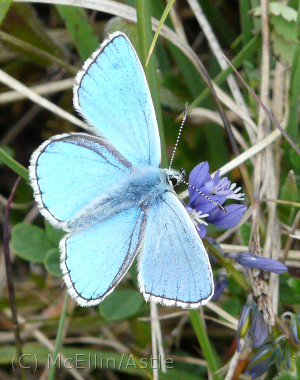 |
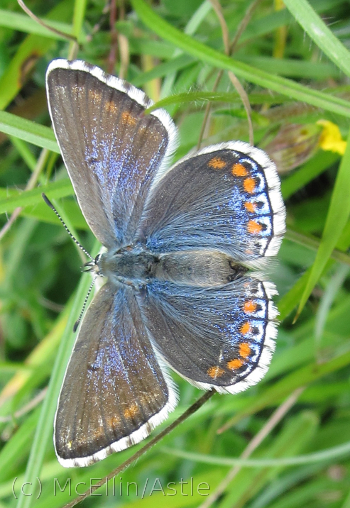 |
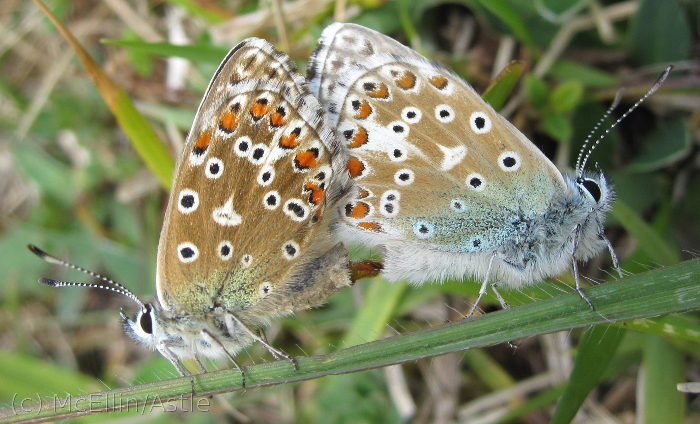 |
||
Brown Argus Arisia Agestis
| Photographed on Rodborough Common - clearly related to the "Blues" in spite of its name. | 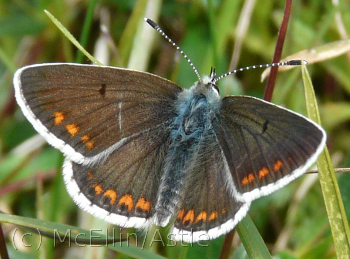 |
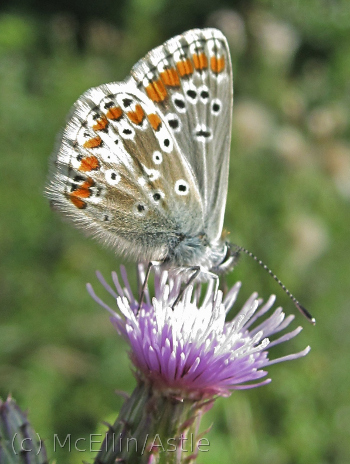 |
Chalk Hill Blue Polyommatus coridon
| Note the dark gray edge to the upper wing surface. | 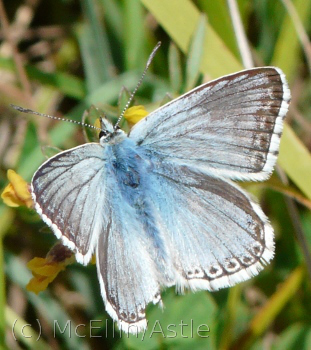 |
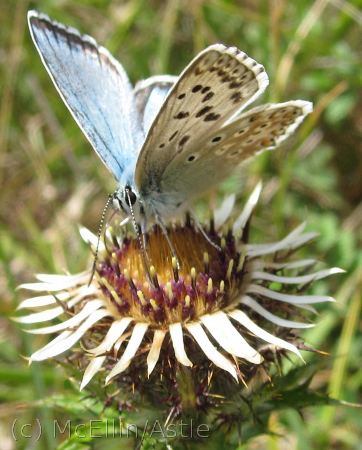 |
Common Blue Polyommatus icarus
| People sometimes mistake this for the Adonis, until the first time they see a real Adonis, but the blue is much less intense. Nor does it have the clear black lines along the edge of the wings. | 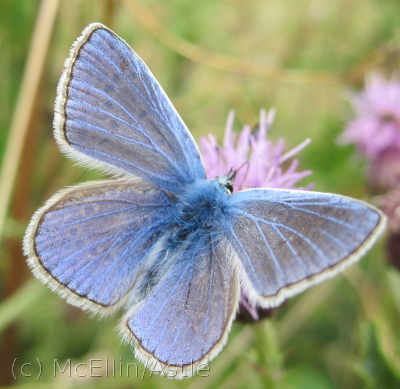 |
Holly Blue Celastrina argiolus
|
This was photographed locally. My wife has, however, only every managed to get a camera close to one example, and not so close at that. The Female can be distinguished from other Blues by the wide dark band on the upper side of the wing. You probably need to see the wing underside to distinguish the male from other blues. It has a rather restrained pattern of dark dots on a blue background. (See this website for more photographs.) |
 |
Large Blue Maculinea arion
|
This example of the Large Blue was photographed at Daneway Banks, where the species has been re-introduced. Large Blues have a life cycle that depends on the larva feeding on a single species of red ant. The larva lives in the anthills. You will not see it anywhere except those special locations which have an abundance of anthills of the right species - so have a trip to Daneway during late May to early July - but don't expect to be alone: people come from far and wide just to see this rarity. |
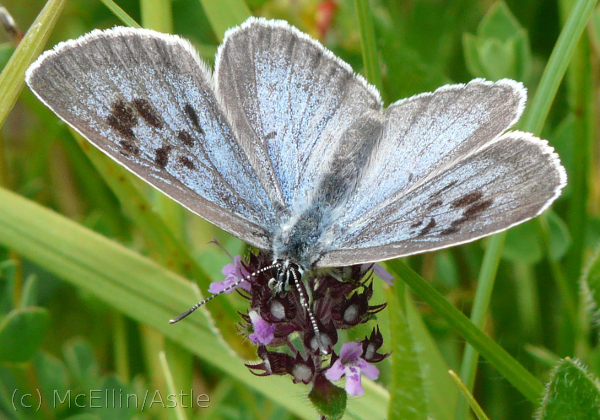 |
Small Blue Cupido minimus
| This was photographed on Rodborough Common, though most of our photographic encounters with this small butterfly have been at Daneway Banks. |  |
Green Hairstreak Callophrys rubi
| Fairly common, and visible in May/June. |
|
Small Copper
| This was photographed in a Minchinhampton Garden | 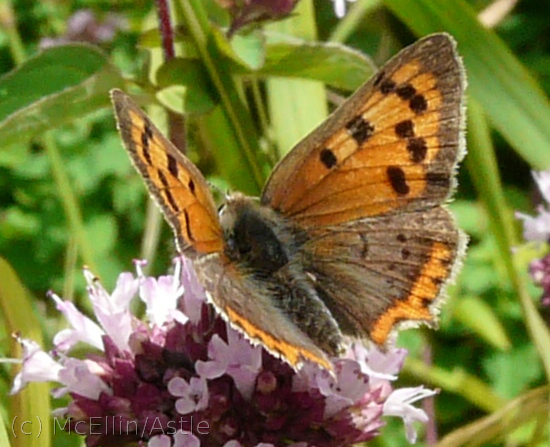 |



